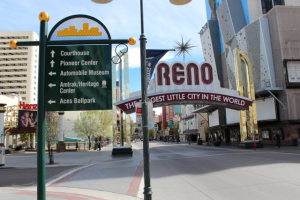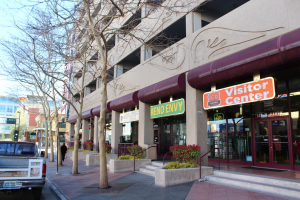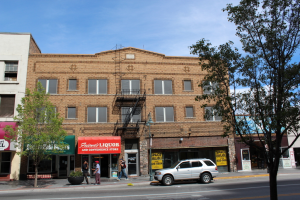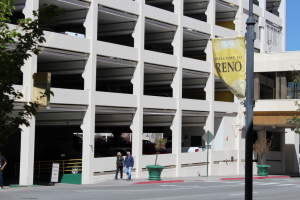I had the great pleasure back in April of participating in a TEDx event at the Nevada Museum of Art. My complete talk can be viewed here but in short, I spoke about how and why to make our cities more walkable, mostly using examples from downtown Reno, the city where I live.
Knowing that it is the constant presence of people that brings an area to life and makes others want to spend time there, I first suggested two reasons why we should focus on making particular spaces in our cities more walkable (beyond the obvious universal goal of reducing our dependence on automobiles & everything that goes along with them):
- They may be iconic or otherwise well-known spaces that are most closely identified with the city, and therefore, in the minds of many, come to stand for the entire city, for good or bad.
- They may be at a physical crossroads, located between other desirable areas, making it critical that they be made both appealing and safe, to turn disconnected “pockets of walkability” into cohesive corridors.

A Reno Arch has stood in the center of downtown Reno since the late 1920s, and the area is still the city’s most recognizable spot.
Reno’s central casino core fits both of these criteria; not only is it the home of the city’s most iconic image–the Reno arch–but it is the area most traveled by and known to tourists. Even more importantly to its residents, the casino core is directly at the center of four popular and walkable districts: the University of Nevada (to the north), Truckee River/Midtown (south), Aces ballpark and the emerging shops/restaurants/clubs of Fourth Street (east) and thriving Riverwalk district/kayak park (west).
In the effort to make such areas more walkable, I suggested a need to consider three primary factors: variety, scale, and connection. In terms of variety, the environment needs to ensure variety in appearance, function, and people. Basically, it needs to attract a variety of people all hours of the day–shoppers, businesspeople, families with children, tourists, and residents. That’s the only way a place can feel both safe and authentic. So what to do? Encourage and support a variety of businesses, particularly development that caters to different uses at different times of day–street-level business with apartments above; live/work spaces, coffee shops, restaurants, museums, retail of all types.
The scale needs to be people-friendly; no one enjoys walking in a space that seems tailored for cars. Parking garages, block-long solid edifices with no individual storefronts or visual interest…these are both soul-deadening and dangerous, since they offer no opportunity to create a constant movement of people in and out of city blocks, adding a constant influx of pedestrians to the sidewalk.

Street-level retail adds visual interest to parking garages, and attracts a variety of people to a block’s various storefronts. This stretch contains a restaurant, a combination visitor center/popular retail shop, a post office, and more.
Connection means paying attention to how pedestrians use these spaces, in order to encourage greater use. Create attractive anchors that can visually draw people from one destination to the next. Make walking enjoyable. If you need parking garages, at least place commercial storefronts on street level (and why not do that in the hotel-casinos, too?); make sidewalks functional; prioritize infill projects to eliminate shadowy vacant lots and deteriorating properties that make people uncomfortable and can promote undesirable activity. It’s amazing how far people will walk if they find the experience enjoyable and safe (we’ll walk for hours through a shopping mall–the equivalent of several city blocks–and yet often balk at having to walk two blocks from a parking space to a restaurant!).

When you consider walkability your primary goal, you can see potential everywhere. Every building is full of possibility.
You may be thinking hey, that sounds great, but I’m not an urban planner, or an architect, or a business owner who might want to relocate to one of these areas–so what can I do? Easy. Go to these critical areas, park your car and walk around. See what’s already going on down there. Take a walking tour. Support the effort. Tell other people about it. Pay attention to what is being proposed in these areas, and ask yourself if it meets these criteria. Participate in the process. When walkability is the goal, you literally carry the solution with you, in your own two feet.

